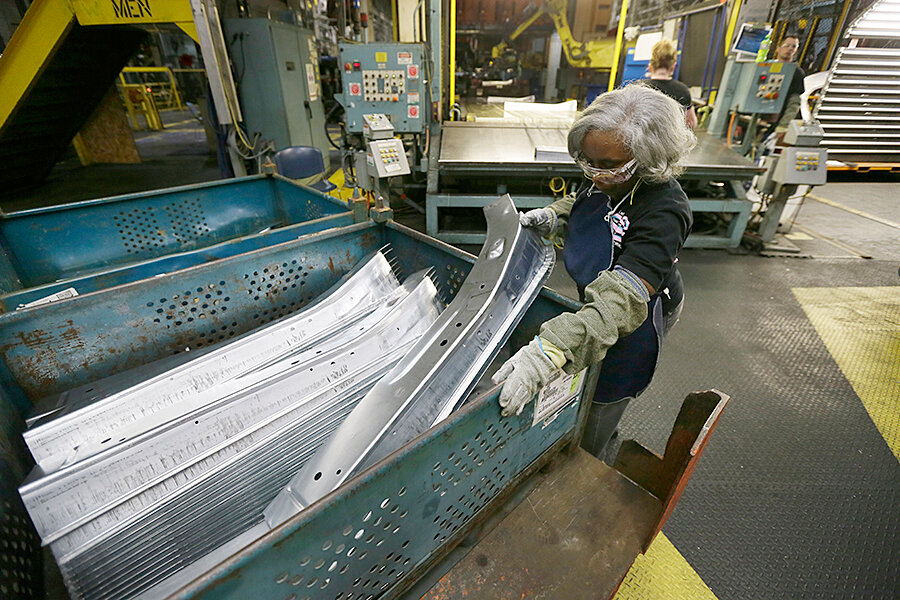US productivity declined in first three months of year, as labor costs jump
Loading...
| Washington
U.S. worker productivity declined in the first three months of the year as labor costs jumped, reflecting a slowdown in growth.
The Labor Department said Wednesday that productivity, which is the amount of output per hour of work, fell at 1.9 percent rate in the first quarter. Productivity dropped at a 2.1 percent rate in the final three months of 2014.
Labor costs surged at a 5 percent rate in the first quarter, after having increased 4.2 percent in the fourth quarter.
Falling productivity coupled with higher labor costs are usually a negative for the economy, since it implies additional expenses without improvements in worker efficiency. Increased worker productivity generally fuels stronger economic performance.
But the figures can be an extremely volatile on a quarterly basis. This is only the third back-to-back quarterly decrease in the past 25 years.
Overall economic growth essentially flat-lined in the first quarter, rising at a tepid annual pace of only 0.2 percent, the government reported last week. The combination of harsh winter weather, falling oil prices hurting domestic energy firms and a West Coast ports dispute appears to have stifled the economy at the start of the year. Gross domestic product had risen at an annual rate of 2.2 percent in last year's October-December quarter.
The seemingly temporary factors at the start of the year have led many economists to expect productivity to recover somewhat.
"This is exactly what happened at this time last year, when the unseasonably bad winter hit output more than employment," said Paul Ashworth, chief U.S. economist at Capital Economics. "Productivity will rebound in the second quarter and unit labor costs will drop back."
Still, productivity has been rising at an annual rate of 0.6 percent, down from an average of 2.1 percent between 2000 and 2013. This means that productivity gains have slowed in ways that can ultimately limit broader economic growth.
Since the recession ended in mid-2009, labor costs had mostly been limited. But cost pressures have climbed as employers added 3.1 million jobs in the past 12 months, causing the unemployment rate to drop to 5.6 percent from 6.6 percent during the same period.
The rising employment costs likely reflect commissions and bonuses being paid to workers, said Ian Shepherdson, chief economist of Pantheon Macroeconomics, in a client note. Actual wages paid by companies — which don't include bonuses — have barely improved. Average hourly wages have risen just 2.1 percent in the past 12 months.
The Federal Reserve carefully monitors productivity and labor costs for signs that inflation is nearing higher levels.
At the moment, the Fed is looking for incomes to rise at a faster clip, which would help Americans catch up from a prolonged period when wage growth was weak.
For the past three years, inflation has been rising at rates well below the Fed's target of 2 percent annual price increases. In recent months, price gains have fallen further amid a big drop in oil prices and a stronger dollar that has made foreign-made goods cheaper for U.S. consumers.







